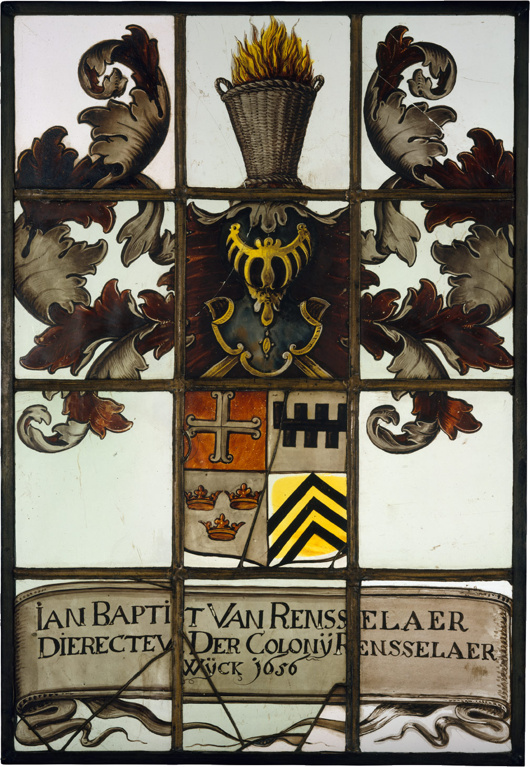
About Andrew Cusack
 Writer, web designer, etc.; born in New York; educated in Argentina, Scotland, and South Africa; now based in London.
Writer, web designer, etc.; born in New York; educated in Argentina, Scotland, and South Africa; now based in London. read more
News
Blogs
Reviews & Periodicals
Arts & Design
World
France
Mitteleuropa
Knickerbockers
Argentina
The Levant
Africa
Cape of Good Hope
Netherlands
Scandinavia
Québec
India
Muscovy
Germany
Academica

The patroonship of Rensselaerswyck was erected in 1630 giving its patroon, Kiliaen van Rensselaer, feudal powers over a large parcel of land on the banks of the Hudson River. Despite exercising a strong influence on the growth and development of New Netherland and the Hudson Valley, Kiliaen never actually stepped foot in the new world but kept close control of his domain from across the ocean in Amsterdam.
Jan Baptist was Kiliaen’s second surviving son, and served as director at the ‘colony’ as it was often known from 1652 to 1658. He commissioned Evert Duyckinck to make this painted-glass window displaying his coat of arms in 1656 and gave it to the Dutch Reformed Church in Beverwyck (today’s Albany).
While the congregation still exists — and celebrated its 375th anniversary in 2017 — the original church was demolished in 1805 and the window moved to the Van Rensselaer Manor House which itself survived til 1890 before facing the wrecking ball. The window was preserved and was left to the Metropolitan Museum of Art through the 1951 bequest of Mrs J. Insley Blair and while well documented it does not appear to be on display at the moment.
The patroonship itself was converted into a manorial lordship by the English authorities after they took over and survived until it was broken up amongst relatives after the death of Stephen van Rensselaer III in 1839.
This last great patroon had proved an indulgent lord and the efforts of his inheritors to claim uncollected back rents led to the 1839-1845 “Helderberg War” or “Anti-Rent War” of tenants revolting against the system. The great landholders, seeing the end was nigh, were convinced to sell up and in 1846 the state of New York adopted a new constitution abolishing feudal tenure. The era of patroonships and manors in the Hudson Valley had come to an end.
Search
Instagram: @andcusack
Click here for my Instagram photos.Most Recent Posts
- Sag Harbor Cinema March 26, 2025
- Teutonic Takeover March 10, 2025
- Katalin Bánffy-Jelen, R.I.P. March 3, 2025
- Substack Cusackiensis March 3, 2025
- In the Courts of the Lord February 13, 2025
Most Recent Comments
Book Wishlist
Monthly Archives
Categories


